THE LAIR (2022)
An RAF pilot shot down in Afghanistan finds unexpected horrors in a deserted bunker...
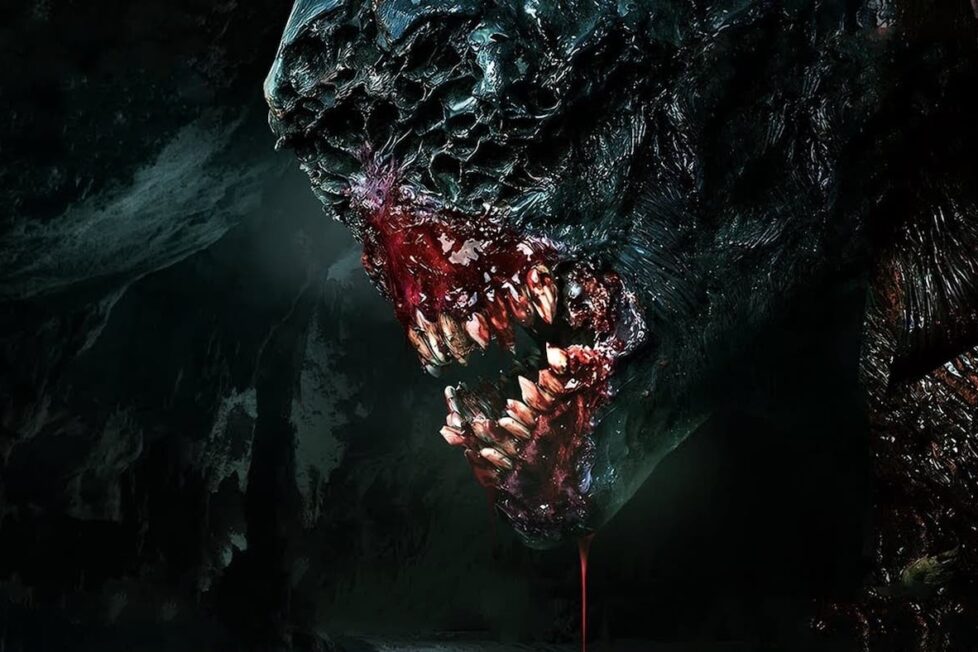
An RAF pilot shot down in Afghanistan finds unexpected horrors in a deserted bunker...


I’m not a soldier, but I’d think developing infantrymen with sharpened teeth hasn’t been the obvious route to military supremacy for at least the last century. Still, it’s a more fertile premise for a sci-fi horror movie than a bunch of engineers designing tanks or missiles, and when handled well it can successfully combine military and horror genre elements. That was the case in Overlord (2018), for example, where the fiendish experimenters were Nazis, while in Neil Marshall’s The Lair they are, less typically, 1980s Russians…
The opening title informs us that, in April 2017, the United States Air Force destroyed “a mysterious target in a remote Afghan province”, implying it was no ordinary operation and promising to reveal what led up to it. The film proper then starts inauspiciously with Royal Air Force Captain Kate Sinclair (Charlotte Kirk) flying over Afghanistan in a deeply unimpressive cockpit scene where the overwhelming impression is of a plastic mock-up. Afghan militia on the ground shoot her down and Kate survives the crash but is pursued until she comes across an abandoned bunker with a rusted, possibly bloodstained, CCCP sign showing it’s a relic from Soviet-occupied Afghanistan.
In one of several scenes where The Lair—an uneven movie—displays real verve, Sinclair employs a clever trick to open the chained-up bunker. And once inside, in another of the film’s better moments, she switches on a light for the first time to reveal what appears to have been (surprise, surprise) some kind of experiment involving human beings, who are still there, confined in large glass boxes.
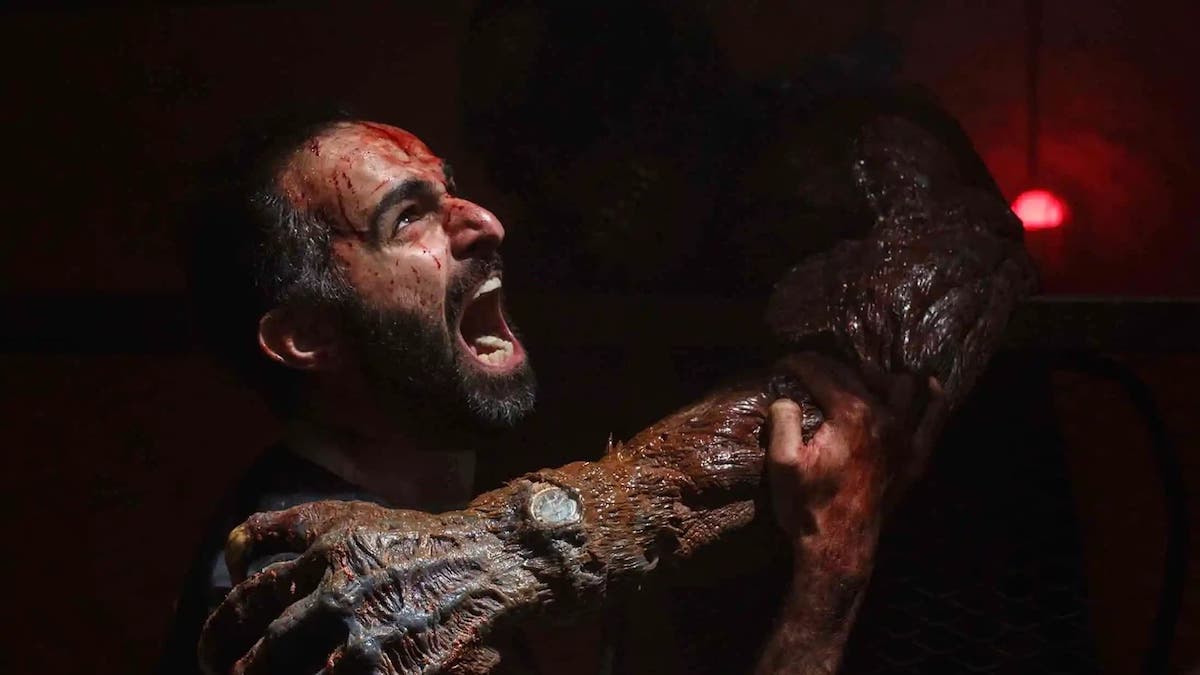
Marshall—and Kirk, who also co-wrote the screenplay—now make a strategic mistake by revealing, only 16-minutes in, one of the monsters the Russians created decades earlier, and audience hopes for the movie sink further once Sinclair unconvincingly dispatches it with a flare. (She seems to have an awful lot of equipment for somebody with no rucksack and not many pockets.) Surely we’re not in for a whole hour of hand-to-hand, woman-on-monster combat in the dark?
Fortunately not. While much of the movie is frustratingly set at night, The Lair becomes more interesting when Sinclair leaves the bunker and is rescued by a small group of US soldiers based in a rudimentary fortified encampment nearby. Led by Major Finch (Jamie Bamber with a dubious American accent), who knows more than he’s letting on, the soldiers are a bunch of misfits; depicting the black Cpl Lafayette (Kibong Tanji) as a petty thief seems almost suicidal amidst current racial sensitivities until it’s revealed they’ve all been sent to this remote outpost as a result of misconduct. Also stationed with them are a small group of Brits (supposed to be SAS, I think), the most prominent of whom is Sgt Jones (Leon Ockenden).
For necessary plot reasons, it’s not possible for this garrison to simply summon help from a distant larger base, or to be evacuated, and so they’re on their own as—inevitably—the awakened monsters from the Soviet bunker gather to attack.
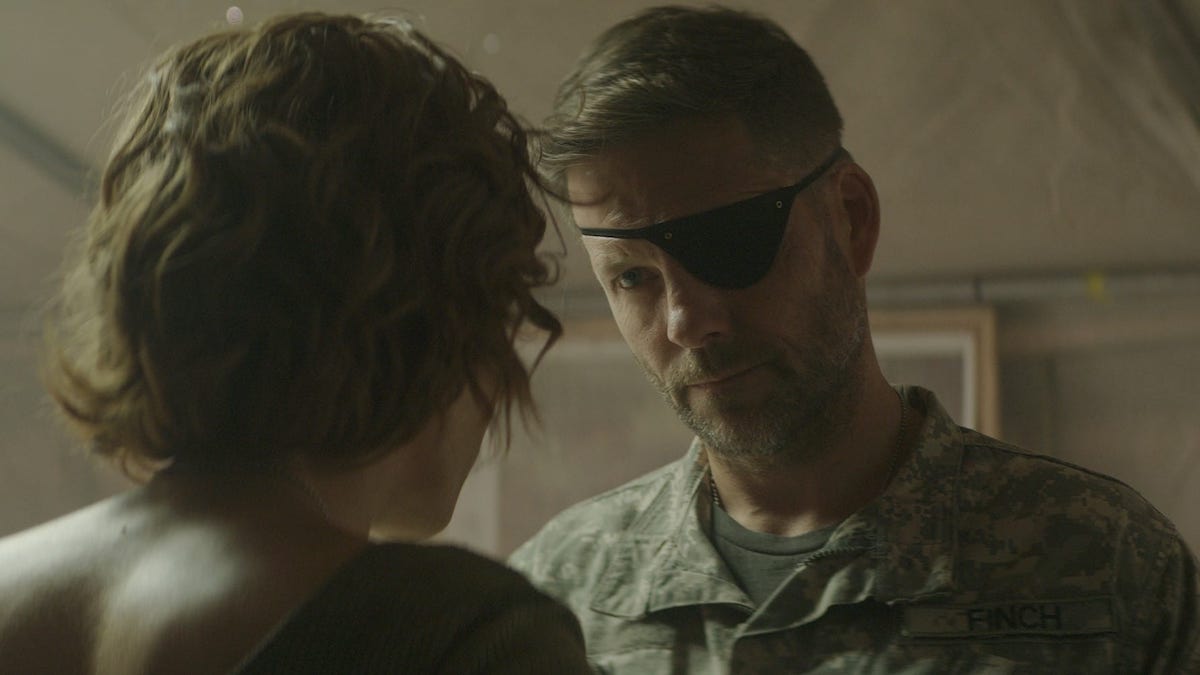
The Lair has many individually successful scenes: the first onslaught on the US base, for example; the surviving troops silently emerging into daylight from a shipping container where they’ve been hidden for the night; and the dissection of a captured monster. There are imaginative touches, too, like the emphasis on the creatures’ foul smell and a neat alt-history explanation for the Soviet invasion of Afghanistan.
Set against these, the rather clichéd attempts at making comedy out of cultural differences only detract from the tension, and the frequent parody-Britishness is just strange: the dying words of Johnson (Alex Morgan) are “I’m sorry for the inconvenience”, so stiff-upper-lipped as to be ridiculous. Sgt Jones talks about “argy-bargy” though nobody of his generation really does, and everybody talks about tea. Marshall is from the northeast of England, so must know how unrealistic this all sounds, but perhaps it’s supposed to appeal more to an American audience.
The Lair fails to hit the mark in other ways, too. Christopher Drake’s score can be the kind that lays on the musical scares only when we see the desiccated corpse—but not before, when heightening tension might have been more useful. The sets (especially the inexplicably cobweb-free bunker) also feel skimpily dressed and unlived-in too.
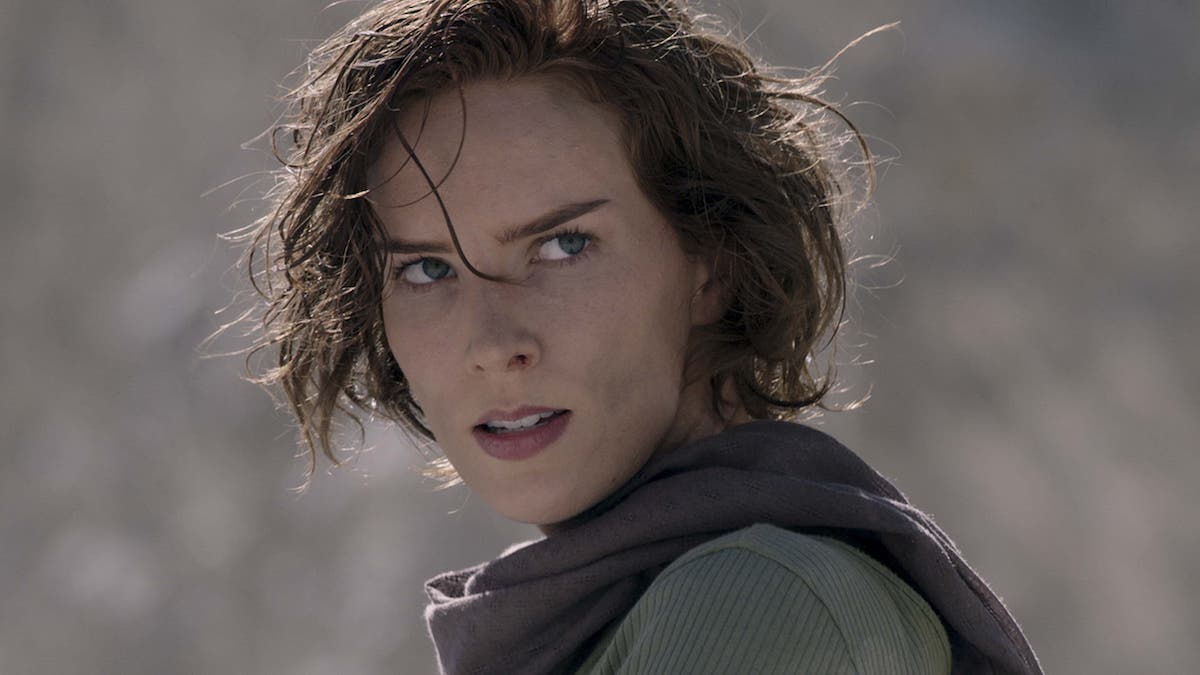
As for the monsters themselves, they’re effective enough when they’re simply large and humanoid—reminiscent of Marshall’s own Crawlers from The Descent, as well as the Creature from the Black Lagoon, and maybe even Alien’s xenomorph. Once they start doing tentacle tricks, though, they become a little silly.
The humans fare better. At first, Sinclair is too hard and shallow to be either likeable or interesting, a brief family scene at the beginning seemingly no more than tokenistic, and adding to the initially poor impression given by The Lair, but she gains some depth as a friendship develops with Sgt Hook (Jonathan Howard).
In any case, it turns out to be more of an ensemble movie than one might expect, and many others in the cast are credible and engaging—notably the aforementioned Howard; Hadi Khanjanpour as an Afghan prisoner with personal history with the monsters; Troy Alexander as one of the Brits; and Mark Strepan as the garrison’s medic.
The Lair doesn’t even begin to approach the standard of Marshall’s two excellent early movies—Dog Soldiers (2002) and The Descent (2005)—but those disappointed by Hellboy (2019) and The Reckoning (2020) might detect hints of a return to form here. It’s patchy in quality, but it does contain moments of flair, and The Lair is worth sticking with beyond the first quarter-hour or so because it does get better.
UK • USA | 2022 | 96 MINUTES | 2.39:1 | COLOUR | ENGLISH

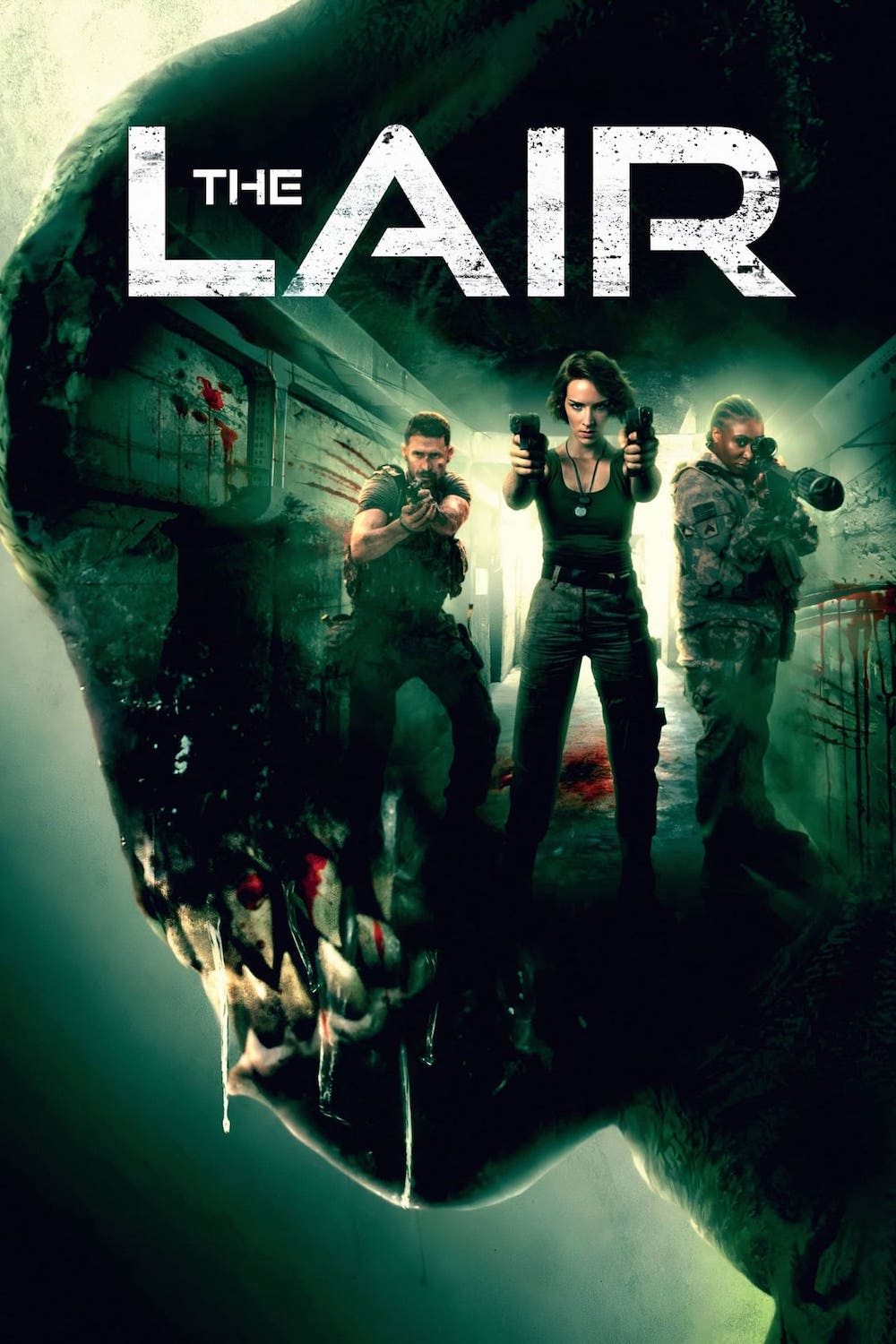
director: Neil Marshall.
writers: Neil Marshall & Charlotte Kirk.
starring: Charlotte Kirk, Jonathan Howard, Jamie Bamber & Leon Ockenden.
